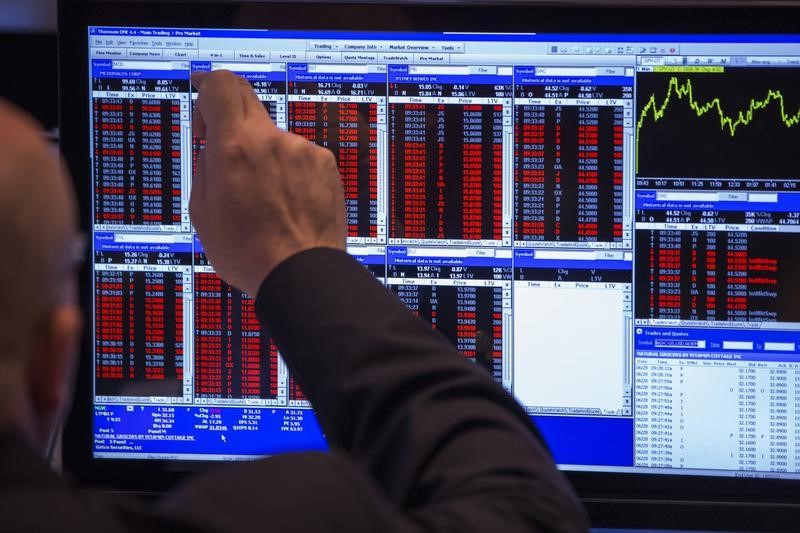Spain’s credit rating upgraded to ’A+’ by S&P on strong growth
Investing.com -- Fitch Ratings has reaffirmed the ’AA-’ long-term foreign and local-currency issuer default ratings of Samsung Electronics Co (F:SAMEq)., Ltd. (SEC) with a stable outlook, as announced on Thursday, February 27, 2025.
The affirmation of the ratings is based on Fitch’s expectation that Samsung (KS:005930)’s credit profile will remain strong, despite uncertainties in the turnaround of the foundry business and a likely downturn in the memory business extending through the first half of 2025. The company’s robust financial flexibility and solid balance sheet are expected to help it navigate challenges in technology competitiveness. Fitch expects the EBITDA leverage ratio to stay around 0.2x, and Samsung to maintain a significant net cash position.
Samsung’s large scale, diverse business portfolio, strong market position in multiple product segments, and relatively stable profitability of the mobile handset business are anticipated to offset cash flow fluctuations of the cyclical semiconductor and display panel businesses.
Samsung holds over 40% market share in DRAM, around 42% share in the high bandwidth memory (HBM) sub-segment, and a 35% market share in NAND. It also leads the small and medium OLED display panel market with over 40% share and is a key supplier of OLED panels for Apple (NASDAQ:AAPL). Samsung ships over 200 million smartphones annually and is among the few capable of making 3nm chips.
Fitch expects Samsung’s strong financial flexibility and large net cash position to help it withstand the downturn in the memory business and the likely ongoing operating loss at the foundry business. The EBITDA leverage ratio is expected to remain around 0.2x, as capital expenditure is likely to moderate in 2025. This will be partially offset by the KRW10 trillion share buyback, of which KRW1.8 trillion was purchased in the fourth quarter of 2024, with the remaining expected to be bought back in 2025.
Despite short-term weakness, major producers’ production adjustment is projected to help stabilize the memory average selling price. The growth of AI-related demand, management’s push to increase sales of HBM chips, and a more favorable product mix are expected to drive the growth and profitability of the memory business in the medium to long term.
However, the operating loss in Samsung’s foundry business is expected to continue in 2025 due to insufficient external demand for its 3nm process node. Utilization will likely be affected by the delayed launch of the new Exynos application processor, designed by Samsung LSI.
In the smartphone market, Samsung is expected to face increasing competition as Chinese brands expand beyond their domestic market. Samsung’s shipment market share decreased to 18% in 2024, from 21.7% in 2022, according to market research firm IDC. The mobile experience segment operating margin is expected to remain around 9%.
Despite Samsung being designated a verified end user by the US government, which reduces short-term sanction risks on its memory production in China, potential future US sanctions, particularly restrictions on providing 7nm and below foundry services to Chinese clients, could hurt business over the medium term.
Samsung’s major production sites for TVs, home appliances, audio, and auto digital cockpit products in Mexico could face a 25% additional tariff, up from the effective US tariff rate of 0.3% on Mexican goods. Samsung’s memory products made in China are also subject to a 10% additional tariff, effective since February, and might be subject to another 25% tariff on semiconductors from the US. As of the third quarter of 2024, the Americas are Samsung’s largest end-market for DRAM and second-largest end-market for NAND.
Samsung’s credit profile is well-positioned compared with global peers in the technology sector. It is one of the leading manufacturers of memory chips, display panels, handsets, and consumer electronics. The company’s exposure to these cyclical industries is a weakness compared with highly rated tech peers, which have higher margin visibility, underpinned by large recurring-revenue bases.
Samsung’s margins are generally lower than that of ’A’ rated peers, such as Accenture plc (NYSE:ACN) (A+/Stable), ASML Holding (AS:ASML) N.V. (A+/Stable), and Intel Corporation (NASDAQ:INTC) (BBB+/Negative), due to Samsung’s exposure to the competitive consumer-electronics business. However, this is more than offset by Samsung’s scale, diversity, and strong operating cash generation. Samsung also has one of the strongest balance sheets among peers rated in the ’A’ to ’AA’ categories, with a net cash position and low leverage.
Fitch does not foresee positive rating action over the medium term, due to Samsung’s exposure to cyclical businesses and capital-intensive sectors. Factors that could lead to a negative rating action or downgrade include a decline in the company’s competitiveness, a significant loss in its market share in major business segments, or lower profitability, resulting in negative FCF or EBITDA leverage above 1.0x on a sustained basis.
Samsung retains a robust liquidity profile, with KRW113 trillion in cash and cash equivalents (including short-term investments), fully covering its total debt of KRW14 trillion as of the end of 2024. Its debt is mostly short-term trade finance, with little financial debt on its balance sheet except for a USD400 million bond issued by Harman, its auto-parts manufacturing subsidiary, which was acquired in 2017. The company is expected to continue to maintain its net cash position over the longer term.
Samsung is a leading technology company based in South Korea, with a diversified business portfolio in semiconductors, mobile handsets, display panels, TVs, and other consumer electronics. Samsung is the world’s largest manufacturer of DRAM and NAND memory chips, mobile OLED display panels, the second-largest smartphone vendor, and one of the three leading edge node chip manufacturers.
This article was generated with the support of AI and reviewed by an editor. For more information see our T&C.
